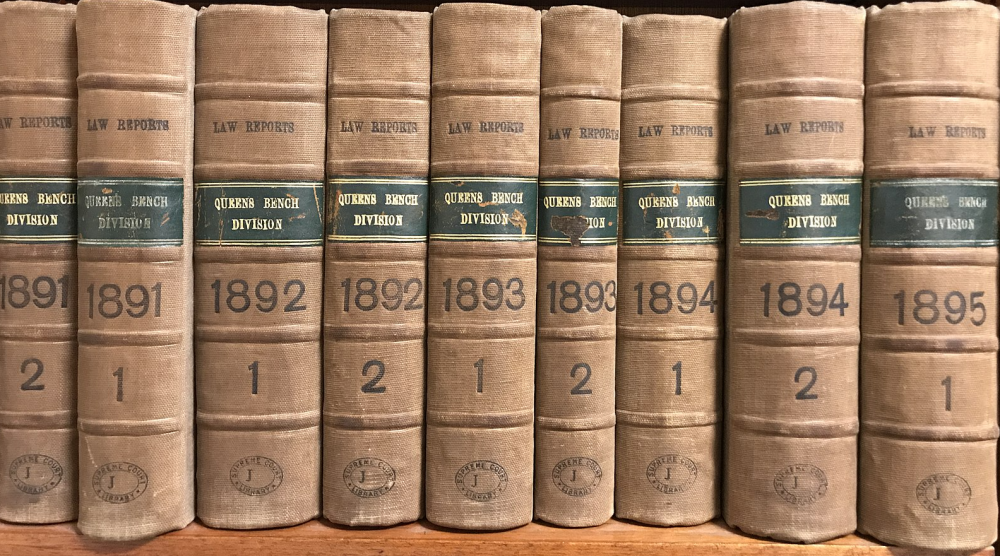LIBOR rigging
|
The Jolly Contrarian Law Reports
Our own, snippy, in-house court reporting service.
|
“If the law supposes that,” said Mr. Bumble,… “the law is a ass—a idiot. If that’s the eye of the law, the law is a bachelor; and the worst I wish the law is that his eye may be opened by experience—by experience.”
- — Charles Dickens, Oliver Twist
This appeal from Tom Hayes’ conviction for “LIBOR rigging” follows the US acquittals in 2022 of Matt Connolly and Gavin Black of the same crimes, and centres on a two-limbed question:
- What do the LIBOR and EURIBOR fixing rules mean and, given they were found in a previous trial to mean one thing, while the appellants believed them to mean another,
- Whose job was it to decide what they meant? Was it, in other words, a matter of fact or law?
US courts, in acquitting Connolly and Black,[1] had considered them to be matters of fact. The English court considers contractual interpretation of contracts to be a matter of law. This seems right, though it leaves something out, which is what did the parties believe the rules to mean?
Under the intellectual theory of the common law that goes only to mitigation and not liability, though — as we will see — in a market where plainly everyone shared an opinion, different from the legal one, about what the contract meant, this risks rendering the law “a ass”. There is also the odd spectre of the law of contract forming the backdrop to a criminal culpability: usually the rozzers will stay out of a contractual dispute even if fraud is alleged, preferring that to be a matter of civil loss and not one requiring the machinery of the state.
“... the rate at which it could borrow funds”
The dispute comes down to the rules Hayes was meant to follow when submitting his LIBOR rate. That “LIBOR Definition” provided:
“An individual BBA LIBOR Contributor Panel Bank will contribute the rate at which it could borrow funds, were it to do so by asking for and then accepting inter-bank offers in reasonable market size just prior to 1100.”
Now, seeing as the different desks and functions of a universal bank borrow in different markets, from different counterparties and in different circumstances, clearly there will be no single unitary rate that the market will offer. The submitter will be confronted with a range of rates. Plainly it would be odd to submit a rate that was completely outside that range, but each of those rates counts as “a rate at which it could borrow funds”.
The judgment interpreted that as the lowest of the submitted rates in the range.
In the LIBOR Definition what is required is an assessment of the rate at which the panel bank “could borrow”. That must mean the cheapest rate at which it could borrow. A borrower “can” always borrow at a higher rate than the lowest on offer. But the higher rate would not reflect what the LIBOR benchmark is seeking to achieve, namely identification of the bank’s cost of borrowing in the wholesale cash market at the relevant moment of time. If in a stable and liquid market a submitting bank seeks and receives offers for a reasonable market size at the very time it is to make its submission, and receives offers ranging from 2.50% to 2.53%, it would accept the offer at 2.50%. It would be absurd to suggest that the LIBOR question could then properly be answered by a submission of 2.53%. The bank “could” borrow at that rate in the sense that it was a rate which was available, but that is obviously not what “could” means.
There is some economic force in this argument, though it seems a brutal grounds for sending someone to prison for 14 years given how easy it would have been for those drafting the LIBOR rules to have put the matter beyond any doubt: namely, by inserting the word “lowest”:
“An individual BBA LIBOR Contributor Panel Bank will contribute the lowest rate at which it could borrow funds ...
And the argument here is not about economic reality, but legal meaning, and legal meaning follows natural, syntactical meanings, and at least in the world of contracts, tends to be construed against the draftsperson’s interest to give the benefit of the doubt to the reader. As a plain matter of English interpretation, as the court openly concedes, “could” does not rule out a higher rate, but in fact implies it: “a borrower can always borrow at a higher rate than the lowest one on offer”.
To conclude that this could does not mean that, therefore, involves implying a term into the contract. Inserting an adjective that the drafters of the rules could easily have included but chose not to. Evidence was not led as to how the rules were drafted, and what flexibility the British Bankers’ Association had in mind. and after all, history has borne out that, sometimes, there are times where Banks and their regulators are rightly motivated by considerations other than the actual (lowest) rate at which one could borrow. ==See also==
References
- ↑ United States v Connolly and Black, No. 19-3806 (2d Cir. 2022)
